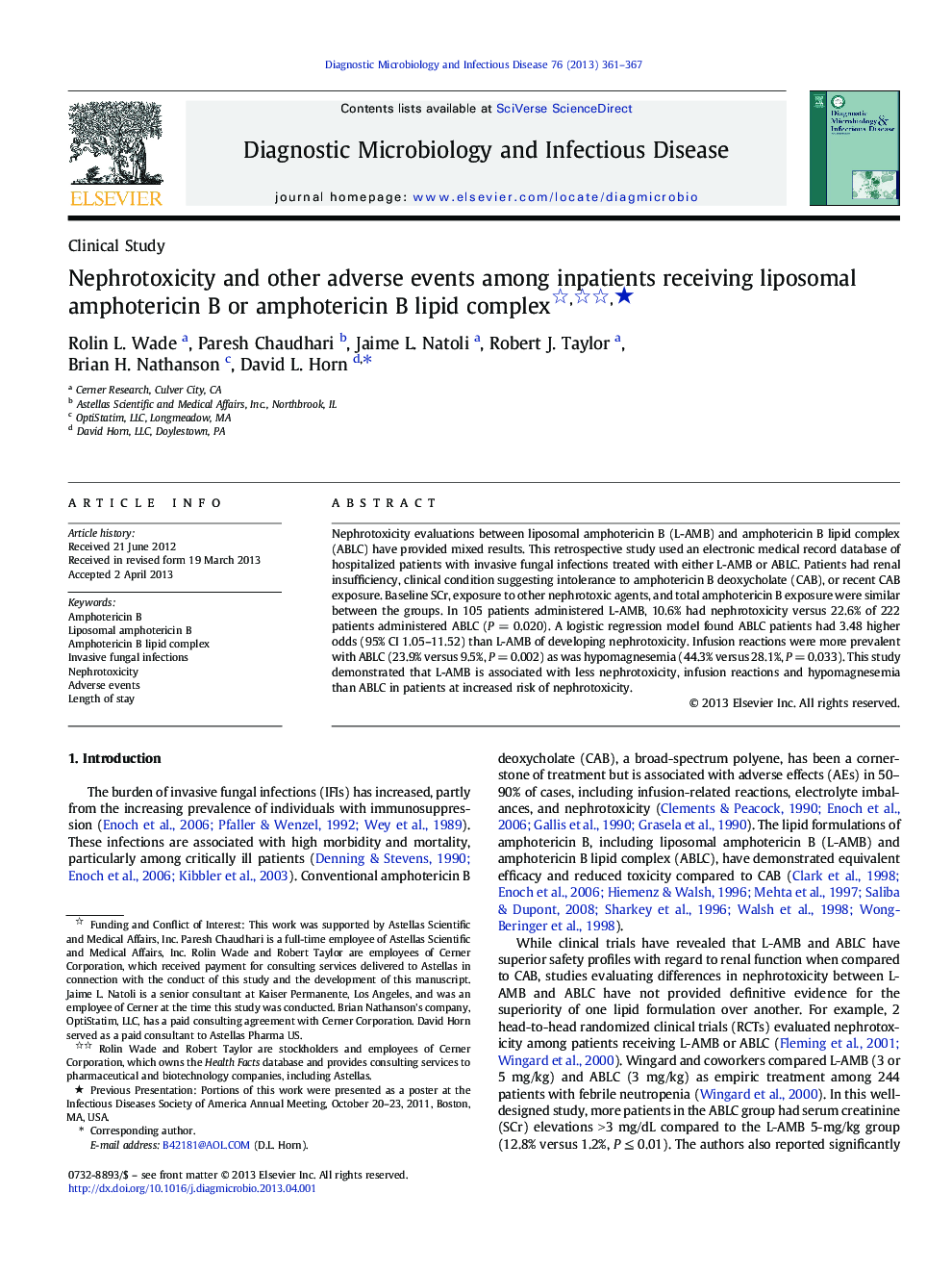| Article ID | Journal | Published Year | Pages | File Type |
|---|---|---|---|---|
| 3347150 | Diagnostic Microbiology and Infectious Disease | 2013 | 7 Pages |
Nephrotoxicity evaluations between liposomal amphotericin B (L-AMB) and amphotericin B lipid complex (ABLC) have provided mixed results. This retrospective study used an electronic medical record database of hospitalized patients with invasive fungal infections treated with either L-AMB or ABLC. Patients had renal insufficiency, clinical condition suggesting intolerance to amphotericin B deoxycholate (CAB), or recent CAB exposure. Baseline SCr, exposure to other nephrotoxic agents, and total amphotericin B exposure were similar between the groups. In 105 patients administered L-AMB, 10.6% had nephrotoxicity versus 22.6% of 222 patients administered ABLC (P = 0.020). A logistic regression model found ABLC patients had 3.48 higher odds (95% CI 1.05–11.52) than L-AMB of developing nephrotoxicity. Infusion reactions were more prevalent with ABLC (23.9% versus 9.5%, P = 0.002) as was hypomagnesemia (44.3% versus 28.1%, P = 0.033). This study demonstrated that L-AMB is associated with less nephrotoxicity, infusion reactions and hypomagnesemia than ABLC in patients at increased risk of nephrotoxicity.
